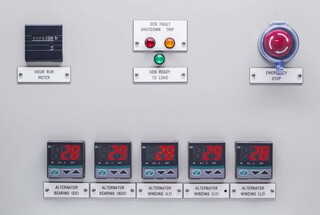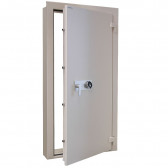What should you do if you are at home during a robbery? The solution is a special room that allows you to safely wait out the danger or evacuate the house unnoticed. How does a panic room work and why is it necessary to install special anti-explosive, armoured doors in it?
"Panic room" (in Poland also known as "Asylum") – this film with Jodie Foster in the leading role, which premiered several years ago, is known to almost everyone. Few people know, however, that more and more often the so-called "panic room", where we seek refuge in situations of sudden danger, is not just a film plot. It is a reality that provides security in homes, offices or public institutions. Unlike a shelter or bunker, so-called panic rooms (also known as safe rooms) do not have to be large, as they are not meant to be used for long periods of time, but only to provide temporary safety. They must, however, guarantee quick access in the event of an attack and be resistant to burglary or being blown up.
Safe room as a method of evacuation
A novelty in the construction of a safe room are whole systems of passages between rooms, which enable one to get from one place of the building to another or to get out of it unnoticed by the attackers. The rooms are connected by built-in pipes and have their own ventilation systems, often operating independently of the main control room, which allow you to stay safely inside. Thanks to several rooms, a safe room can be accessed from various places in the facility and it is also possible to leave it without anyone noticing. Thanks to this solution, you do not become hostage to your own panic room.
Check the safe room at HARTMANN TRESORE!
Panic room equipment
As a panic room is not intended to be used for long periods of time but to provide security in the event of an attack, no food is kept in the panic room and it is not necessary to equip it with beds, desks or survival kits. However, it is essential that the occupants can communicate with the outside world. This means having a telephone in the panic room with a secure separate line and electricity supply. Often separate power risers are installed in the panic room, so that in case of power loss in the building, the room can remain independent. Of course, you shouldn't forget to connect a sewer to it and put a first aid kit inside.
In more advanced constructions, the panic room is also equipped with a video system allowing observation of the house or building from the room level. Such a solution is recommended especially when the room does not have an additional exit or a system of passages allowing to leave it in a different way than through the main door.
Armoured door to a safe room
First of all, a panic room door cannot be an ordinary, traditional door. To ensure safety, they must be reinforced, armoured doors, resistant to both burglary attempts and explosives. They must also be equipped with a mechanism enabling them to be opened from the outside as well as from the inside, and have an internal lock so that a potential attacker cannot close or open the door from the outside when the owner is in a safe room. Armoured doors of a safe room must be equipped with appropriate locks allowing quick access to the room in an emergency situation.
Why is blast resistance important? To ensure the full safety of users. For example, the anti-terrorist explosion-proof armoured door from Hartmann Tresore's HBD range can withstand up to 7 bar of explosive overpressure directed straight at the door – this gives full protection in both domestic and professional environments.
You may be interested in: 6 rules for a safe home
How to choose a secure anti-burglary door?
How to protect your home against theft and burglary? Part 1.




